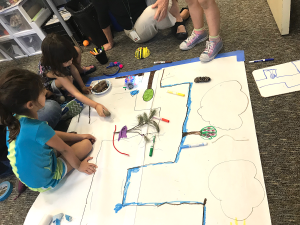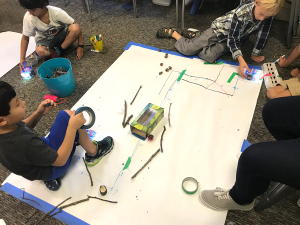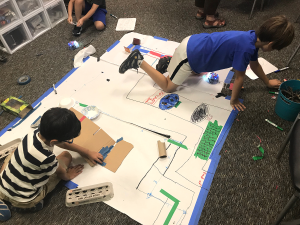
Students from Lesley’s Wonderlab program visited the Lesley Makerspace on October 10th, 2017 to design their own landscapes. Before jumping into making, the group discussed their knowledge of maps and cardinal direction.

The students began the design process by sketching their ideas on whiteboards in small groups. Provided with large butcher paper, art supplies, recyclables, natural materials, and Bee-Bot robots, the groups mapped out their natural areas, including forests, lakes, parks, and pathways for vehicles. Non-standards units of measurement (sticks, string) were used to determine a “Bee-Unit”, or one Bee-Bot robot move forward, in order to create appropriately long pathways and turns for the robot to explore their green space without bumping into trees or falling off a cliff.

Two groups decided to join forces and extended their pathway designs to include overpasses and other 3D obstacles. Students used blue painters tape, which is easy to reposition, as they iterated their designs to align to correct Bee Unit measurements. The final task was programming their Bee-Bot to navigate through their landscapes. The ramp proved to be a solid engineering challenge, adjusted several times in order to make it accessible for the Bee-Bot to successfully scale. The project relied heavily on collaborative problem-solving skills, design planning, measurement, and the iterative design engineering process.